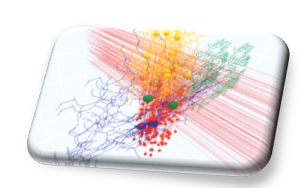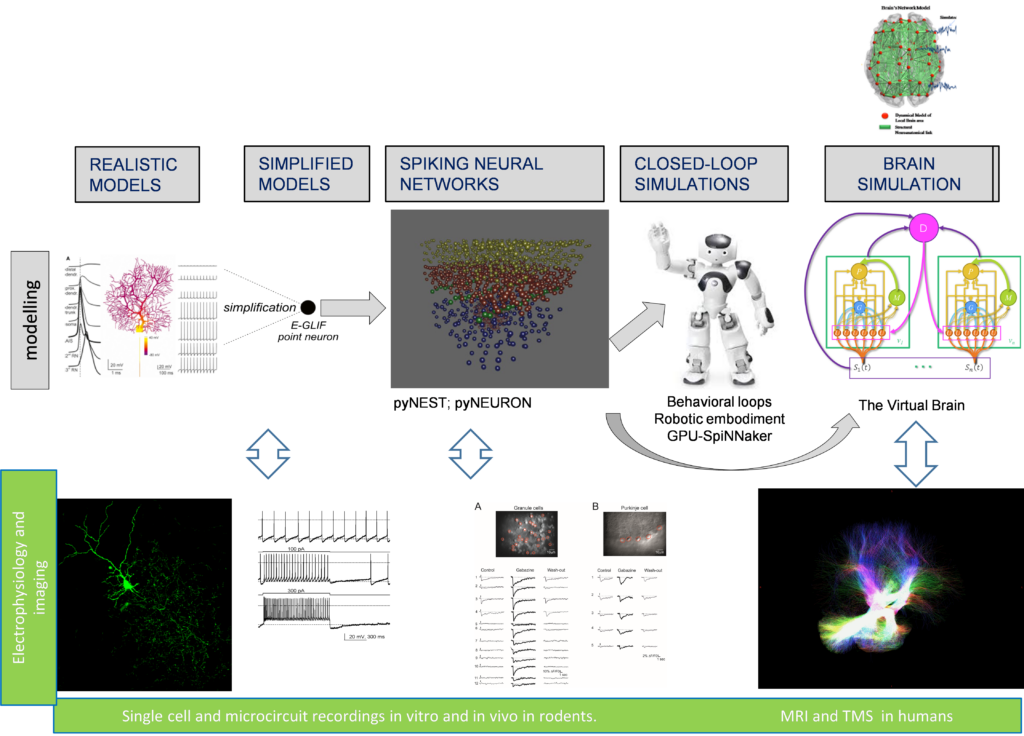The D’ANGELO’S LAB is generating state of the art concepts, models and theories about cerebellar and brain functioning.
The laboratory operates on various projects on the front of experimental research in cellular/molecular neuroscience, computational modelling and integrative brain functions in health and disease.
The work is supported by the Human Brain Project (EU) and is integrated within the Brain Connectivity Center (University of Pavia and IRCCS Mondino, Pavia).
The lab is composed by three sub-units:
- Cellular neurophysiology
- Neurocomputation
- Neuroimaging and Brain Modelling
The Neurophysiology sub-unit investigates plasticity and computation in cerebellar neurons and microcircuits. The laboratories provides the ideal environment to investigate physiology from subcellular mechanisms to network dynamics and behaviour. The laboratories are equipped with electrophysiology setups for single-cell patch-clamp, intracellular calcium imaging, two-photon calcium imaging, voltage-sensitive dye imaging, optogenetics in vitro and in vivo, multielectrode arrays in vitro (high-density MEA) and in vivo. There are facilities for cellular and molecular biology.
The Neurocomputation sub-unit elaborates advanced computational models of neurons and microcircuits. The models are generated from and validated against experimental data at various levels, are passed through various steps of validation and simplification, and are then used to generate closed-loop robotic controllers and virtual brains. A dedicated cluster computing facility is used for data elaboration and modelling.
The Neuroimaging and Brain Modelling sub-unit investigates the relationship between brain structure, function and dynamics based on MRI techniques and Virtual Brain Modelling. Research is addressing issues related to motor control and cognition along with their pathological counterparts (including ataxia, autism, AD etc.).

The research of the laboratory is focused on the multiscale analysis of the cerebellum and aims to:
- understand the molecular/cellular mechanisms of functions of neurons, synapses and microcircuits
- clarify the meso-scale and large-scale processes in which local microcircuits are involved
- simulate dynamic control of plasticity in trial-and-error learning
- integrate the cerebellum models into extra-cerebellar circuits for large-scale network simulations using robotic controllers and virtual brain models.
This research is coordinated with the development and refinement of experimental and neuroinformatic tools and occurs in collaboration with several national and international research centers and companies. The cerebellum models are exploited for simulations of pathological alterations of plasticity and circuit dynamics generating multiple fall-outs on brain modelling, theoretical understanding of brain functions and diseases, and infrastructure implementation.
More details can be found in each related sections
The Unit of Neurophysiology – Department of Brain and Behaviorals Science-University of Pavia



